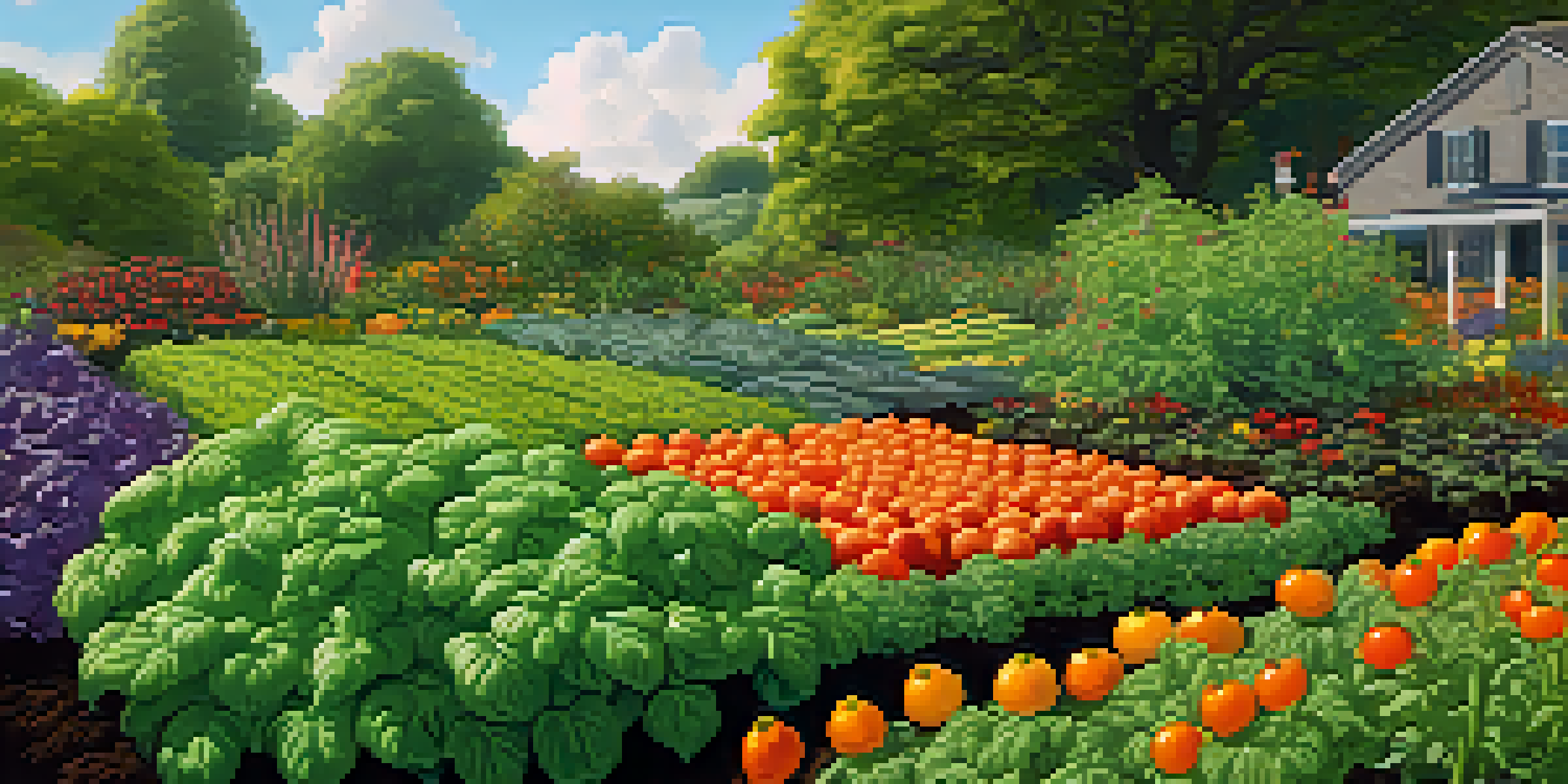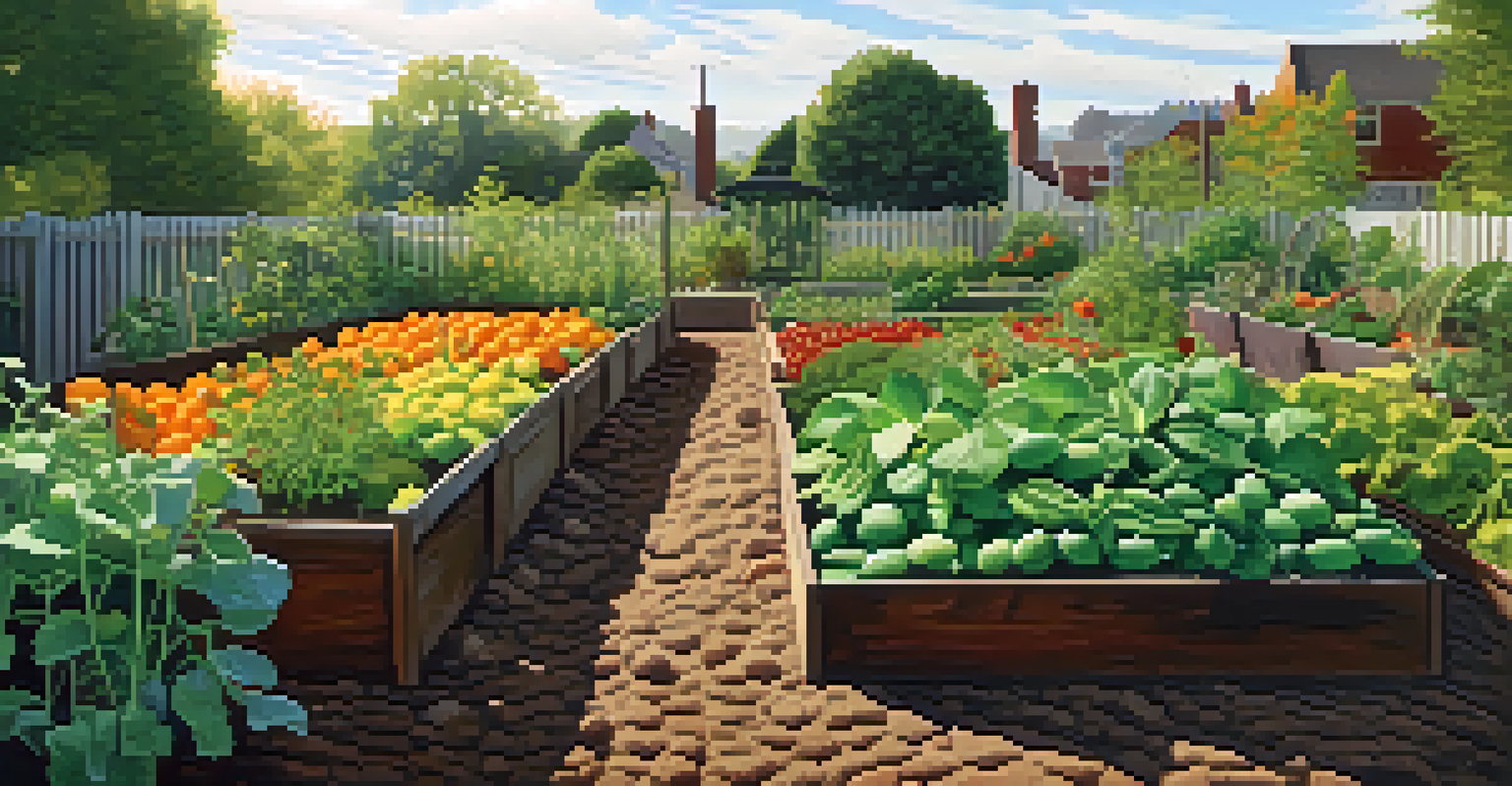Combining Species: Planting Techniques for Mutual Growth

Understanding Companion Planting and Its Benefits
Companion planting is the practice of growing different plants together for mutual benefits. This technique can enhance growth, deter pests, and improve flavors. For instance, planting basil alongside tomatoes can boost tomato growth while also enhancing its taste.
The greatest gift of the garden is the restoration of the five senses.
By strategically pairing plants, gardeners can create a more balanced ecosystem. Some plants can provide shade, while others can fix nitrogen in the soil, enriching it for neighboring plants. This synergy not only promotes healthier plants but also reduces the need for chemical fertilizers.
Moreover, companion planting can help in pest management. Certain plants naturally repel pests that might harm their neighbors, providing a natural defense mechanism. This way, gardeners can cultivate a flourishing garden without relying heavily on pesticides.
Key Plant Pairings for Optimal Growth
Some plant pairings have proven particularly effective in promoting mutual growth. For example, carrots and onions are a classic duo; the smell of onions can deter carrot flies, while carrots can help aerate the soil for onions. This relationship exemplifies how different species can complement each other.

Another excellent pairing is corn, beans, and squash, often referred to as the 'Three Sisters' in Native American agriculture. Corn provides a natural structure for beans to climb, beans fix nitrogen in the soil, and squash spreads across the ground, helping to suppress weeds. Together, they create a self-sustaining garden ecosystem.
Companion Planting Boosts Growth
Growing different plants together can enhance growth, deter pests, and improve flavors.
These pairings not only enhance growth but also maximize space, allowing gardeners to cultivate a variety of plants in a compact area. The key is to choose plants that support each other's growth and combat common pests.
The Science Behind Mutual Growth in Plants
The concept of mutual growth in plants is rooted in science, particularly in the study of plant interactions. Plants communicate through their root systems and can send signals to each other, often through mycorrhizal networks, which are fungal connections in the soil. This communication can alert neighboring plants to stressors, like pests.
To plant a garden is to believe in tomorrow.
Additionally, certain plants release chemicals that can stimulate growth in others. For example, marigolds release compounds that can deter nematodes and attract beneficial insects, creating a healthier growing environment for nearby plants. This biochemical signaling highlights the importance of understanding plant relationships.
By studying these interactions, gardeners can make informed decisions on which species to plant together. This scientific approach not only enhances garden productivity but also fosters biodiversity, making the garden more resilient in the face of challenges.
Soil Health: A Foundation for Mutual Growth
Healthy soil is crucial for the success of companion planting. The interactions between different plant roots can improve soil structure, enhance nutrient availability, and increase moisture retention. This means that a diverse mix of plants can contribute to a more fertile and robust growing environment.
Incorporating cover crops, such as clover or vetch, can further enrich the soil. These plants not only prevent erosion but also add organic matter as they decompose, providing essential nutrients for other plants. Thus, maintaining healthy soil is key to ensuring that all plant species thrive.
Diverse Plants Aid Pest Management
Combining various species creates a balanced ecosystem that naturally manages pests.
Regular testing of soil health can guide gardeners in making necessary amendments, such as adding compost or adjusting pH levels. By focusing on soil quality, gardeners can create a supportive foundation for their plants to grow together harmoniously.
Pest Management Through Plant Diversity
One of the most significant advantages of combining species is enhanced pest management. Diverse plantings can confuse pests, making it harder for them to locate their preferred hosts. For instance, mixing flowering plants with vegetables can attract beneficial insects that prey on common pests.
Plant diversity can also lead to a more balanced ecosystem, where natural predators thrive. When plants are grouped together based on their defensive properties, they can create a protective barrier against pests. This not only helps individual plants but also the overall health of the garden.
Using a variety of plants can minimize the risk of pest outbreaks, which often thrive in monocultures. Gardeners can create a dynamic garden environment that naturally balances pest populations while promoting healthy plant growth.
Seasonal Planting Strategies for Continuous Growth
Implementing seasonal planting strategies can maximize mutual growth throughout the year. By understanding the growth cycles of different plants, gardeners can stagger plantings to ensure a continuous harvest. For example, planting early spring crops like peas alongside slower-growing plants like tomatoes can optimize space.
Additionally, rotating crops seasonally can help prevent soil depletion and reduce pest pressures. By changing the plant types in a specific area, gardeners can disrupt pest life cycles and promote soil health. This practice is especially effective in reducing the buildup of soil-borne diseases.
Healthy Soil Supports Plant Health
Maintaining healthy soil is essential for maximizing the benefits of companion planting.
Seasonal planting not only enhances garden productivity but also keeps the garden visually appealing year-round. With careful planning, gardeners can enjoy a lush and varied landscape that evolves with the seasons.
Conclusion: Embracing the Benefits of Combined Planting
Embracing the art of combining species in your garden can lead to remarkable benefits, from healthier plants to a more resilient ecosystem. By understanding the relationships between different plants and employing strategic planting techniques, you can create a thriving garden that supports biodiversity.
Whether you're a seasoned gardener or just starting, experimenting with companion planting can be a rewarding experience. You'll not only enjoy the fruits of your labor but also contribute to a healthier environment by reducing chemical inputs and fostering natural pest control.

So, why not take the plunge? Dive into the world of combined planting and watch your garden flourish as various species work together to create a vibrant, productive ecosystem.